For the final week of the fall session, we focused on beaded sculptures and jewelry. For each child, I pre-made a base for the sculpture using a wood block, nails, and plastic coated wire. Then I offered the children beads for stringing onto the wire. For the older children, I also offered them elastic beading cord for making jewelry.

Instead of planning a second project for when the kids got sick of beading, I wanted to offer them an “open studio,” with most of our materials accessible to them on the shelf. I began the fall session with only tools on the shelf (and paint at the easels) then eventually placed the glitter on the lower shelves as well. Now that the children have had weeks of experience with the materials, It is time to give them a greater sense of autonomy in their creative process. On the lower shelves I placed glitter, markers, oil pastels, tempera paint, liquid watercolor, colored glue, collage items, paper, and a variety of tools (the rollers, brushes, and eyedroppers were new additions). I was curious to see how the children would respond to the variety of choices and accessibility.

In the first few classes, the children came into the studio and immediately began beading, without noticing the new shelf set-up. Their focus and fine motor skills were incredible!


Luke and Brooks checked out materials on the floor while the big kids worked on beading… too cute to not include!






When the children finished beading their wires, I helped them to twist the wire around the other nail head and… voila! A wire sculpture that you can bend and shape again and again.

While some kids took to beading right away, others spotted the new set-up and went straight for the shelves!

The children were encouraged to use the materials on the shelves, even if that meant gluing all over their bead work or passing up the beads all together.



I think it is important for children to learn at an early age how to be self-starters and creative thinkers. In my experience it seems that young children naturally start out this way, but aren’t always allowed the opportunity to strengthen these skills. This is something that I work on with the children throughout each session. I was delighted to see on this last week that without planning and prompting from me, most of the kids knew exactly what they wanted to do and how to do it.
The rest of the photos will give you a glimpse of the “open studio” work of the children.





















Thanks for a wonderful session and Happy Holidays!

































































































































































































































 .
.




